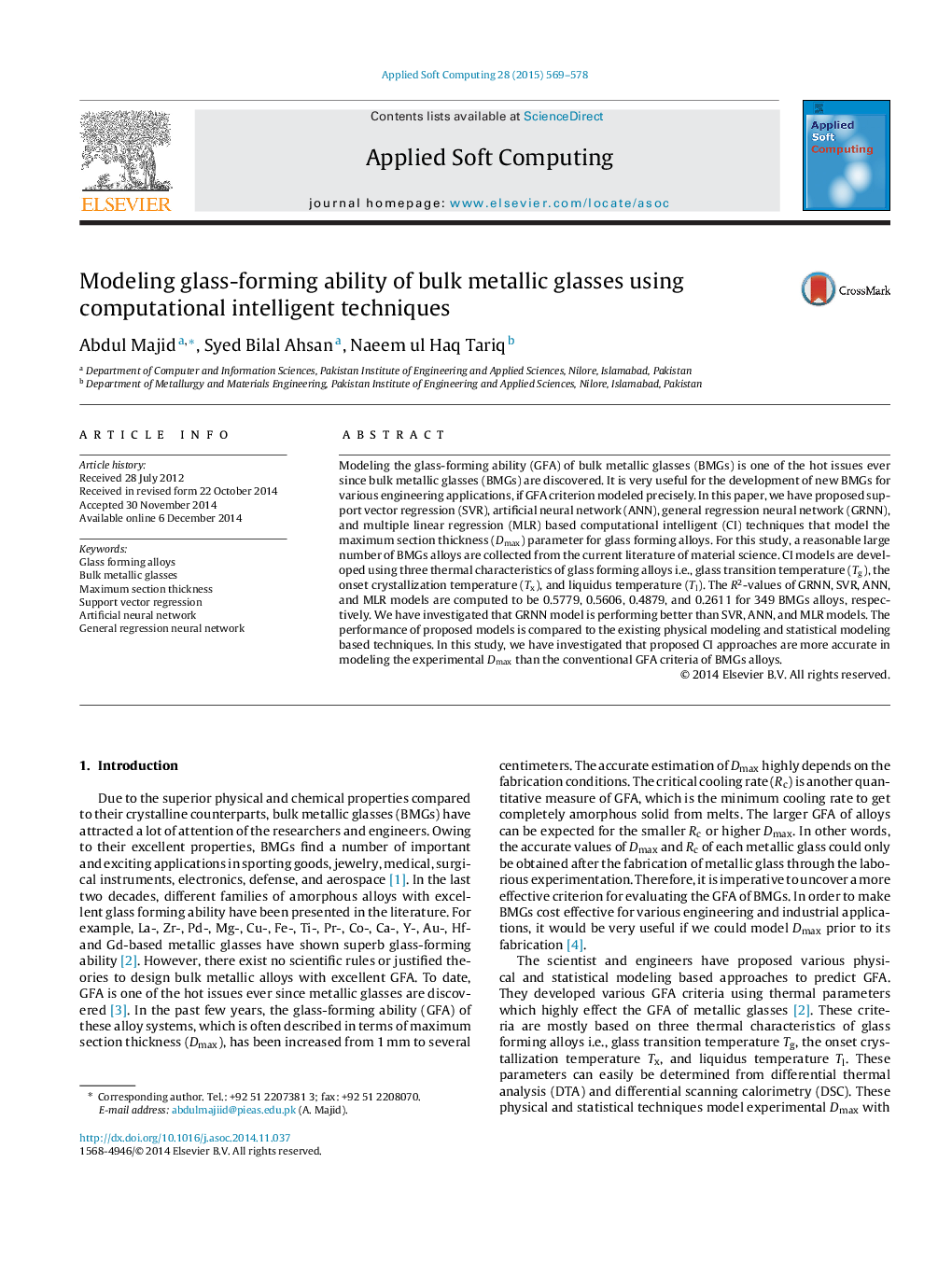| Article ID | Journal | Published Year | Pages | File Type |
|---|---|---|---|---|
| 6905591 | Applied Soft Computing | 2015 | 10 Pages |
Abstract
Modeling the glass-forming ability (GFA) of bulk metallic glasses (BMGs) is one of the hot issues ever since bulk metallic glasses (BMGs) are discovered. It is very useful for the development of new BMGs for various engineering applications, if GFA criterion modeled precisely. In this paper, we have proposed support vector regression (SVR), artificial neural network (ANN), general regression neural network (GRNN), and multiple linear regression (MLR) based computational intelligent (CI) techniques that model the maximum section thickness (Dmax) parameter for glass forming alloys. For this study, a reasonable large number of BMGs alloys are collected from the current literature of material science. CI models are developed using three thermal characteristics of glass forming alloys i.e., glass transition temperature (Tg), the onset crystallization temperature (Tx), and liquidus temperature (Tl). The R2-values of GRNN, SVR, ANN, and MLR models are computed to be 0.5779, 0.5606, 0.4879, and 0.2611 for 349 BMGs alloys, respectively. We have investigated that GRNN model is performing better than SVR, ANN, and MLR models. The performance of proposed models is compared to the existing physical modeling and statistical modeling based techniques. In this study, we have investigated that proposed CI approaches are more accurate in modeling the experimental Dmax than the conventional GFA criteria of BMGs alloys.
Keywords
Related Topics
Physical Sciences and Engineering
Computer Science
Computer Science Applications
Authors
Abdul Majid, Syed Bilal Ahsan, Naeem ul Haq Tariq,
